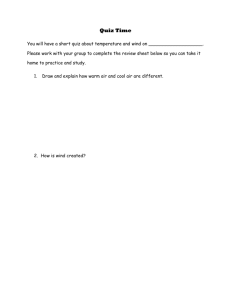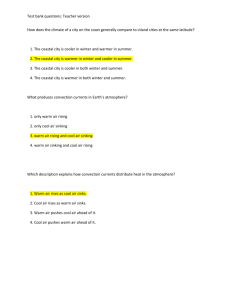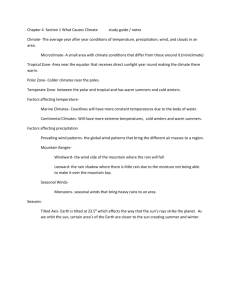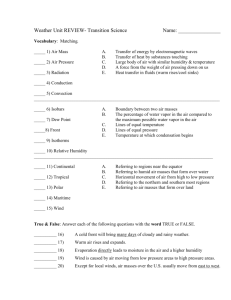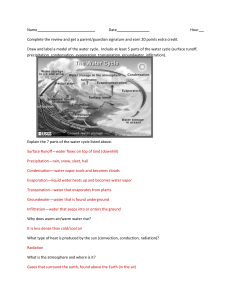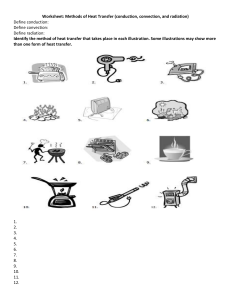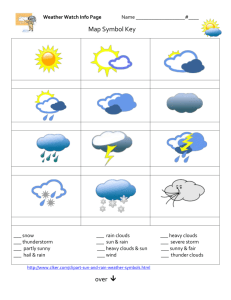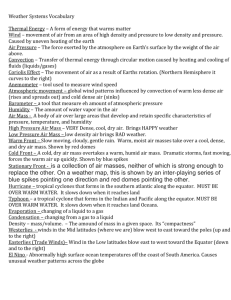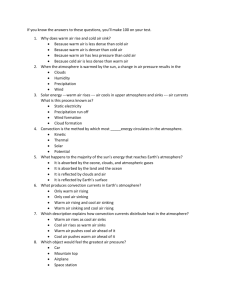Chapter 6 Study Guide
advertisement
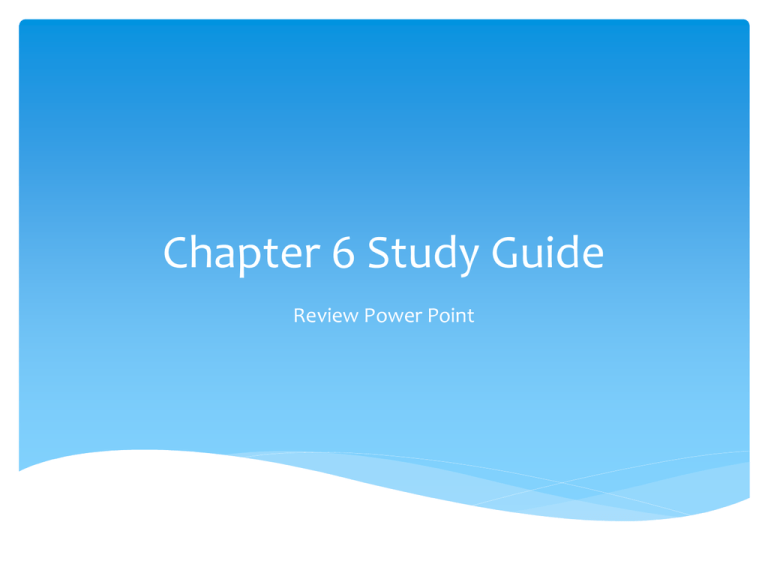
Chapter 6 Study Guide Review Power Point What causes air pressure? Answer: Gravity Look at the picture of a mountain. What happens to air pressure as you move from the base of a mountain to the top of a mountain? Answer: Air pressure decreases. Why is cool air heavier than warm air? Answer: Gas particles in cool air are closer together than those in warm air. How can ocean currents affect the climate of an area? Answer: Large bodies of water affect the temperature of the air above them. What type of air exists in a… …continental polar air mass? Answer: cold, dry air …maritime tropical air mass? Answer: warm, wet air …maritime polar air mass? Answer: cold, wet air …continental tropical air mass? Answer: warm, dry air What does this symbol on a weather map show? Answer: a cold front What about this symbol? Answer: a warm front At which place on Earth do the Sun's rays shine at the most direct angle? Answer: equator What is the source of a hurricane's energy? Answer: warm ocean water What must happen for a tornado to form? Answer: Layers of wind in a storm must blow at different speeds or in different directions. Why doesn't a closed paper bag collapse under the weight of Earth's atmosphere? Answer: Air pressure also exists inside the bag. What will happen to warm air that is surrounded by cold air? Answer: The warm air will rise. What is one important use for Doppler radar? Answer: tracking tornadoes Name four tools used by weather forecasters. Tell what type of information each tool provides. Answer: 1. An anemometer measures wind speed. 2. A barometer measures air pressure. 3. A rain gauge measures the amount of rain that has fallen. 4. A hygrometer measures the moisture in air. How does Earth’s uneven heating cause convection currents to form? All places are not heated equally, so there are differences in air temperatures all over. Convection currents form because warm air rises and cool air sinks. Name and describe three types of weather fronts. Warm front: warmer air moves against and rises above cooler air. A long period of precipitation is followed by higher air temps. Cold front: cooler air moves against warmer air. This warm air rises quickly. Heavy rain falls and temperatures drop. Stationary front: a boundary between 2 air masses moving back and forth. Weather remains cloudy with some rain.

